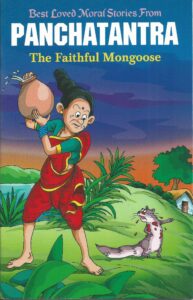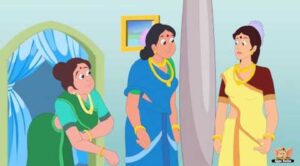 Every child who has grown up in India is bound to be aware of the Panchatantra fables. These childhood stories, however, are of increasing historical significance, and over the years have been called out for their inherently sexist undertones. Here, I attempt to figure out what these representations could mean for the status of women in ancient India, trying to question whether this collection of children’s fables is much more than that- a political treatise.
Every child who has grown up in India is bound to be aware of the Panchatantra fables. These childhood stories, however, are of increasing historical significance, and over the years have been called out for their inherently sexist undertones. Here, I attempt to figure out what these representations could mean for the status of women in ancient India, trying to question whether this collection of children’s fables is much more than that- a political treatise.
Even the history behind why the Panchatantra was written reflects the patriarchal context in which it was set up. It is said that there was a king called Amarashakti, who had three sons. Though the King himself was both a scholar and a powerful ruler, his sons were “all dullards.” According to the King, instead of teaching the Princes scriptures and texts, they should be taught the wisdom inherent in them, by the aged scholar Vishnu Sharma. He had to do that in a manner easy for the Princes to comprehend, and that was by telling a succession of animal fables – one weaving into another – that would grant them the wisdom they required to succeed their father. Reconstructing stories that had already been part of the local culture for years, Panchatantra was composed into an amusing five-part work to convey the essence of diplomacy, relationships, politics and administration to the Princes. These five discourses subsequently became the Panchatantra, meaning “the five (pancha) treatises (tantra)”.
This backdrop in which the story was written is important to note as it reflects how Panchatantra is, at its heart, a collection of political lectures written by a man, commissioned by a man, and to be read by men for their education and political role. The representation of genders in the stories, therefore, is a reflection of male attitude in the society towards women. Panchatantra was aimed at lifestyle training; with each story ending with a moral or an idiom to take away from. Therefore, the depiction of women and gender relations in the Panchatantra is a direct commentary on that of ancient India.

Of the stories that we come across in the Panchatantra, there are very few stories where women characters have some role to play. Even if they do, it is either secondary to the male characters or presented in a negative light. A rare instance where female characters are portrayed positively is in a few of the stories where female birds are shown as mothers concerned for the welfare of their brood. A pattern emerges from these stories: where motherhood is seen as the only positive role for a female, while other females, even wives, who do not play maternal roles, are seen as a threat to a man’s path of Dharma. They pose this threat by their ‘overly sexual nature’ and ‘evil scheming mind’.
Some recurrent themes can be seen in this depiction of women, either directly as female characters or through the allegory of female animals; these themes are:
- Women’s portrayal as “crafty” or “wicked”: In multiple instances across the book, women are depicted as scheming, evil creatures who would get their way through fooling naive men.
- Themes of adultery and cheating: Many stories in the book centre around the common theme of cheating and that too by the wife. This was to depict women as fickle-minded creatures who would run to the next man when it came to riches or sexual pleasure, and thereby caution the Princes to stay away from women as they would serve as distractions against their dharma.
- Instances of violence against women : Violence against women is casually and passably mentioned in stories, where women are beaten up for making the smallest mistakes.
- Women’s confinement to domestic sphere:
In all the stories, women almost never leave the household unlike men; and they are also only depicted as wives, mothers or daughters. This theme is also supported by other texts of the time that indicate that a woman’s place is within the four walls of the house to look after the family, while the man has to go out and provide for his family.
These ideas of masculinity and femininity are very clearly segregated in these tales. Men in Panchatantra are depicted as strong leaders, learned Brahmins or Kings, who occupy the position of Heads of the family, in contrast to women’s depiction as described above. Vishnu Sharma advises men to stay away from women as they are distractions from their path of virtue. Men in relationships are also shown to be ideal, loving and doting husbands, while women are seen as greedy, complaining and demanding wives who are never satisfied by whatever men do. The tales are mostly centred around a male character, who is the carrier of moral values in the story; women, on the other hand, are secondary characters in relation to men (wife, mother, daughter).
As mentioned before, Panchatantra is not just a children’s fable; it’s a political treatise. It therefore tells us a lot about how society was organised in ancient India in the form of stories. The need for women to be increasingly domesticated in these stories stems from real life; ‘respectable women’ were increasingly confined to the sphere of the household in real life as well. Apart from this, the author time and again mentions that ‘an ideal woman/wife is one who listens to her husband, does whatever he says without questioning’ thus propagating the general stereotype that women have to be submissive and inferior to men. Marriage is hailed as an important institution; Vishnu Sharma mentions that a daughter is supposed to be married off as soon as she attains puberty, otherwise she’ll be a burden to her parents. These ideas were probably very basic to the ancient Indian society the text was based on. Therefore, Panchatantra, a book composed about two thousand years ago, needs to be re-examined today for its gender-biased ideology before being advertised as a children’s book.

